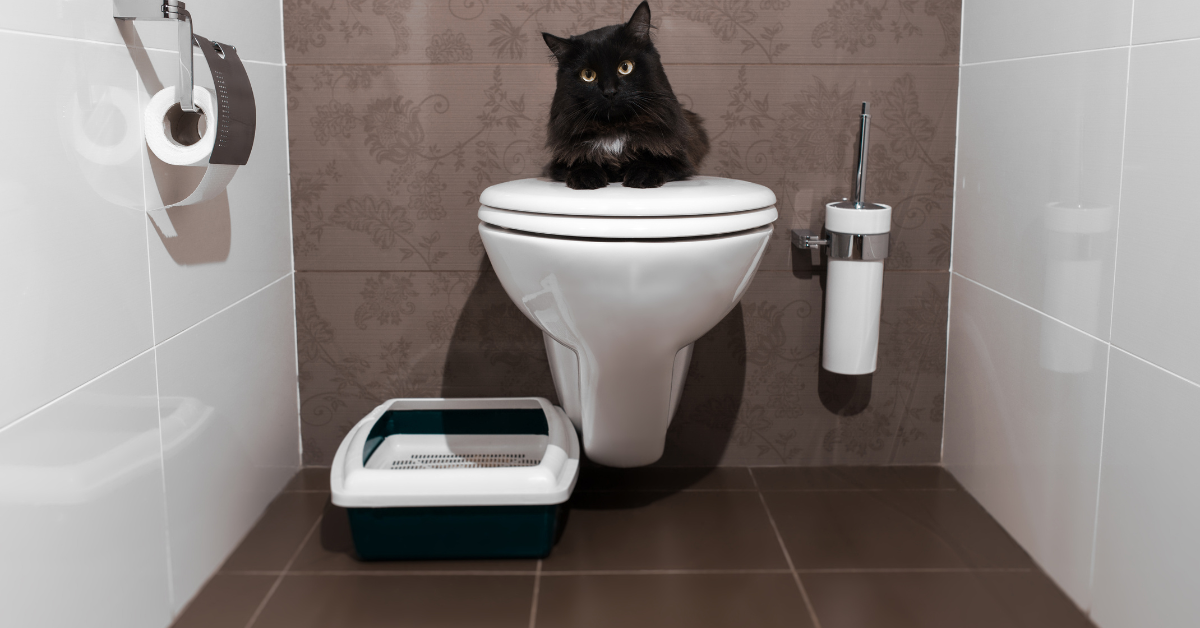Listed here below you can get additional first-rate points related to Don’t flush cat feces down the toilet.

Introduction
As feline proprietors, it's necessary to bear in mind how we take care of our feline buddies' waste. While it might appear convenient to flush cat poop down the toilet, this technique can have harmful effects for both the environment and human health.
Alternatives to Flushing
The good news is, there are more secure and much more accountable ways to throw away feline poop. Consider the complying with options:
1. Scoop and Dispose in Trash
One of the most typical method of dealing with pet cat poop is to scoop it right into a biodegradable bag and throw it in the trash. Be sure to use a devoted trash scoop and take care of the waste promptly.
2. Usage Biodegradable Litter
Select naturally degradable cat clutter made from materials such as corn or wheat. These litters are eco-friendly and can be safely gotten rid of in the garbage.
3. Hide in the Yard
If you have a yard, take into consideration hiding cat waste in an assigned area far from vegetable yards and water resources. Make sure to dig deep sufficient to prevent contamination of groundwater.
4. Mount a Pet Waste Disposal System
Invest in a family pet waste disposal system particularly designed for cat waste. These systems make use of enzymes to break down the waste, decreasing smell and ecological influence.
Health Risks
Along with ecological concerns, flushing feline waste can likewise position health dangers to people. Feline feces might consist of Toxoplasma gondii, a parasite that can trigger toxoplasmosis-- a possibly serious ailment, specifically for pregnant women and people with weakened immune systems.
Ecological Impact
Purging cat poop introduces unsafe virus and bloodsuckers right into the supply of water, posing a substantial risk to water communities. These impurities can adversely affect aquatic life and compromise water quality.
Conclusion
Responsible pet possession extends beyond offering food and shelter-- it additionally entails proper waste administration. By avoiding flushing pet cat poop down the bathroom and selecting alternate disposal techniques, we can decrease our ecological impact and secure human wellness.
Why Can’t I Flush Cat Poop?
It Spreads a Parasite
Cats are frequently infected with a parasite called toxoplasma gondii. The parasite causes an infection called toxoplasmosis. It is usually harmless to cats. The parasite only uses cat poop as a host for its eggs. Otherwise, the cat’s immune system usually keeps the infection at low enough levels to maintain its own health. But it does not stop the develop of eggs. These eggs are tiny and surprisingly tough. They may survive for a year before they begin to grow. But that’s the problem.
Our wastewater system is not designed to deal with toxoplasmosis eggs. Instead, most eggs will flush from your toilet into sewers and wastewater management plants. After the sewage is treated for many other harmful things in it, it is typically released into local rivers, lakes, or oceans. Here, the toxoplasmosis eggs can find new hosts, including starfish, crabs, otters, and many other wildlife. For many, this is a significant risk to their health. Toxoplasmosis can also end up infecting water sources that are important for agriculture, which means our deer, pigs, and sheep can get infected too.
Is There Risk to Humans?
There can be a risk to human life from flushing cat poop down the toilet. If you do so, the parasites from your cat’s poop can end up in shellfish, game animals, or livestock. If this meat is then served raw or undercooked, the people who eat it can get sick.
In fact, according to the CDC, 40 million people in the United States are infected with toxoplasma gondii. They get it from exposure to infected seafood, or from some kind of cat poop contamination, like drinking from a stream that is contaminated or touching anything that has come into contact with cat poop. That includes just cleaning a cat litter box.
Most people who get infected with these parasites will not develop any symptoms. However, for pregnant women or for those with compromised immune systems, the parasite can cause severe health problems.
How to Handle Cat Poop
The best way to handle cat poop is actually to clean the box more often. The eggs that the parasite sheds will not become active until one to five days after the cat poops. That means that if you clean daily, you’re much less likely to come into direct contact with infectious eggs.
That said, always dispose of cat poop in the garbage and not down the toilet. Wash your hands before and after you clean the litter box, and bring the bag of poop right outside to your garbage bins.
https://trenchlesssolutionsusa.com/why-cant-i-flush-cat-poop/

We had been made aware of that editorial on Can You Flush Cat Poop Down The Toilet? from a good friend on our other domain. Are you aware of somebody who is in to the niche? Please feel free to share it. I praise you for your time. Don't forget to come by our site back soon.
Click Here
Comments on “Avoid Toilet Emergencies: Never Flush Cat Poop Down Your Toilet - Expert Guidance”